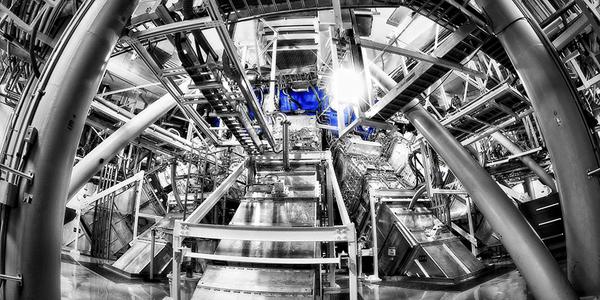For First Time Ever, Lasers Combine Into Superbeam
For 40 years, the Star Wars Death Star has been one of science fiction’s most iconic figures. But scientists and laser experts held that its superbeam could never work because of the properties of lasers—theory says that the beams would just pass through one another, not converge and combine their energy.
That’s all about to change. A team of researchers at Lawrence Livermore National Laboratory (LLNL) has added a plasma—a charged mixture of ions and free electrons—to the concept and successfully combined several separate lasers into a superlaser.
This work, recently published in Nature Physics, stands as an important achievement in laser research and development. For the first time, nine of the National Ignition Facility’s 192 laser beams were combined to produce a directed pulse of light that was nearly four times the energy of any of the individual beams. The team used a plasma optic designed in house to combine the beams and produce the demonstration, the first of its kind.
These types of beams, with high energy and fluence (energy density), are expected to expand a variety of applications including advanced X-ray sources and studies of the physics at extreme intensities. The team plans to scale up the experiment with the hope of combining up to 20 beams into one.
May the force be with these science Jedis.





Comment
Laser Beams
Interestingly, the Death Star and its science fiction protégés are slowly coming to fruition. The farthest reaches of our imagination could eventually become reality.
Comments